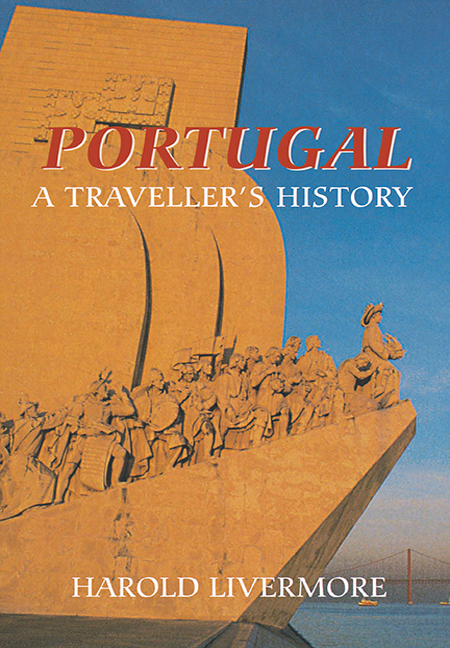Book contents
- Frontmatter
- Contents
- List of Illustrations
- Foreword
- 1 Introduction
- 2 Portugal in History
- 3 Before Portugal
- 4 Islamic Portugal
- 5 Architecture
- 6 Painting
- 7 Music
- 8 Birds
- 9 Fishing
- 10 Portuguese Wines
- 11 Lisbon
- 12 North from Lisbon
- 13 Oporto
- 14 North of Oporto
- 15 Interior Portugal
- 16 Alentejo
- 17 Algarve
- Afterword
- Index
- Frontmatter
- Contents
- List of Illustrations
- Foreword
- 1 Introduction
- 2 Portugal in History
- 3 Before Portugal
- 4 Islamic Portugal
- 5 Architecture
- 6 Painting
- 7 Music
- 8 Birds
- 9 Fishing
- 10 Portuguese Wines
- 11 Lisbon
- 12 North from Lisbon
- 13 Oporto
- 14 North of Oporto
- 15 Interior Portugal
- 16 Alentejo
- 17 Algarve
- Afterword
- Index
Summary
Lisbon is a famous seaport, but it is not on the open ocean. A channel half a mile wide and twenty miles long leads into an inland sea several miles across and broad enough to hold all the world's navies. It is the Straw Sea, Mar de Palha. The name has nothing to do with straw, but suggests a false ocean, rather as the False Creeks explorers used to find, a ‘man of straw’, a dummy. The rim of this expanded river or miniature sea is the Outra Banda, or Other Side.
At the narrows ferries take about twenty minutes to cross, and ply constantly between the Terreiro do Paço or Cais de Sodré and Cacilhas. They are crowded at the rush-hours but otherwise provide a simple and inexpensive way to see Lisbon from the water. Formerly, travellers coming from the east would arrive at Aldeia Galega, the most distant part of the Mar de Palha, and wait for transport to Lisbon. The ferry from Lisbon to Montijo took an hour and a half and sitting on the deck in the sunshine afforded a pleasant way of passing an idle afternoon. The bay at Moita was rendered more attractive by the blue magpie or jay, found only in China and here. Who introduced this beautiful bird is not known; fifty years ago it was confined to Montijo or thereabouts, but now it is not uncommon over a large area.
The south bank seen from the height of the castle in Lisbon looks attractive in a faint veil of blue mist. It is a series of inlets now in part industrialised. Barreiro is the railhead for the southern railway, and passengers obtain tickets from the office near the Lisbon Terreiro and cross by ferry to the trains on the other side. The naval shipyard was traditionally at the Arsenal adjoining the Paço, but was transferred to Alfeite, a former royal estate. Barreiro has docks and yards for the repair of large oil-tankers and other vessels. The streams flowing into the Mar de Palha had water-mills, and one of these at Seixal has been rehabilitated as a tourist attraction.
- Type
- Chapter
- Information
- Portugal: A Traveller's History , pp. 159 - 175Publisher: Boydell & BrewerPrint publication year: 2004



